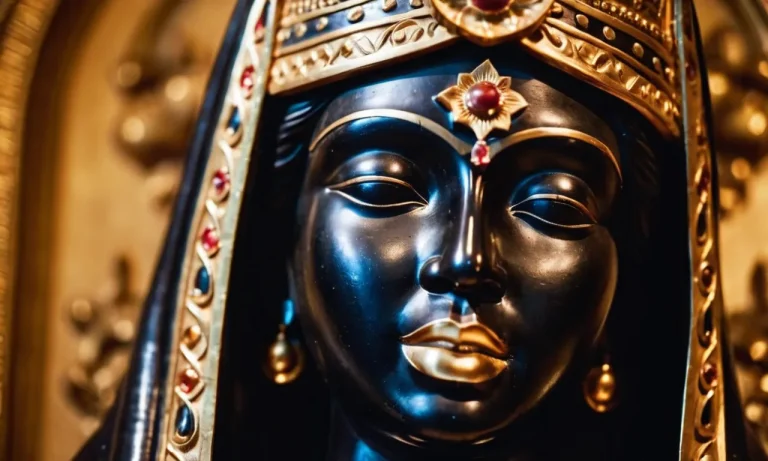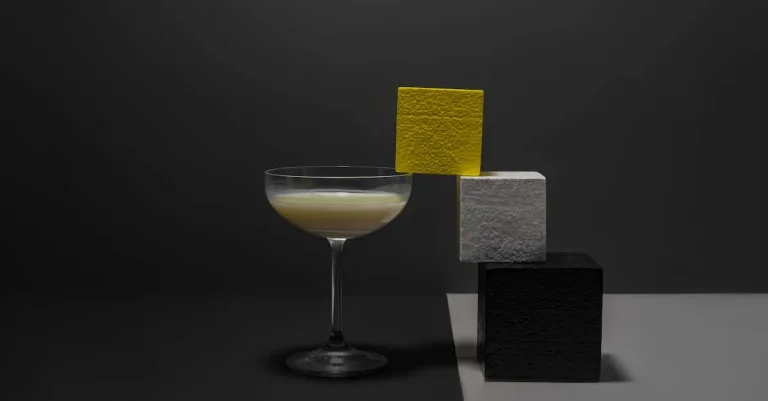Skulls have long captured the human imagination, both inspiring and terrifying us. Cultures around the world have ascribed mystical meanings and symbolism to skulls throughout history. If you’re short on time, here’s a quick answer: Skulls represent duality in many spiritual traditions – they symbolize life and death, change and transition.
In this comprehensive guide, we’ll explore the spiritual meanings behind skulls in areas like Christianity, Hinduism, pagan traditions, and more. We’ll look at how skulls show up symbolically in religious iconography, mythology and folklore.
We’ll also touch on the transformative symbolism of skulls in Mexica traditions and Day of the Dead celebrations.
Skulls in Christianity
Skulls Representing Life and Death in Christ Imagery
Skulls have long been used in Christian art and iconography to represent both life and death in relation to Christ. As a symbol of death and mortality, skulls remind viewers of the finite nature of human existence.
Yet paired with images of Christ, they also evoke eternal life through belief in His resurrection. This dual meaning makes the skull a powerful emblem in Christianity.
Scenes of the crucifixion often depict a skull at the foot of the cross, representing Adam, the original sinner. This reminds us that Christ’s sacrifice conquered sin and death once and for all. When saintly figures are portrayed contemplating a skull in art, it signifies their renunciation of earthly pleasures and contemplation of higher truths.
The Skull at the Foot of the Cross
Placing a skull at the foot of the crucifix has been an artistic tradition since medieval times. The skull represents Adam, whose sin brought death into the world. Its position beneath the cross signifies Christ’s victory over sin and death through his atoning sacrifice.
This vivid emblem conveys core Christian beliefs regarding humanity’s fallen state and redemption through faith in Christ.
The skull also reminds us of our own mortality. In contrast to Christ’s perfection, it symbolizes the corruption and decay inevitable in human nature. Yet as a focal point at Golgotha, the site of Christ’s crucifixion, it also relates to resurrection and the promise of eternal life for those who follow Him.
Skulls in Christian Iconography and Art
As a memento mori, skulls frequently appear in Christian artwork to symbolize penance, asceticism, and transience of earthly pleasures. Saint Jerome, renowned scholar and Doctor of the Church, is often depicted in religious art meditating on a skull in the wilderness to inspire withdrawal from worldly temptations.
According to accounts, Mary Magdalene lived an ascetic life of contemplation in seclusion for 30 years following Christ’s resurrection. She is sometimes portrayed with skull iconography to signify her renunciation of material comforts and penitent lifestyle.
This reflects the skulls broader symbolism of detachment from earthly vanities in Christianity.
Skulls in Hindu Traditions
Kali and the Garland of Skulls
The Hindu goddess Kali is often depicted wearing a garland of skulls around her neck. This gruesome accessory symbolizes Kali’s role as the destroyer of ego and illusion. The skulls represent the human lives Kali has taken and the human egos she has crushed in the process.
Shiva Nataraja and the Crushed Skull
A classic depiction of the Hindu god Shiva as Nataraja shows him performing the cosmic dance of creation and destruction while standing on top of a crushed human skull. This illustrates Shiva’s transcendence over death and ignorance.
The demolished skull beneath Shiva’s feet signifies that he has gone beyond the earthly cycle of birth and death.
The Kapalikas and Ritual Skulls
The Kapalika sects of Shaivite Hinduism historically practiced strange rituals involving human skulls. They would carry skull staffs, cover their bodies in ashes from funeral pyres, and eat and drink from skull bowls in cemeteries.
For the Kapalikas, such morbid practices were thought to bring spiritual insight and magical powers.
Skulls in Pagan Religions
Celtic Skull Symbolism
In ancient Celtic spirituality, skulls held great meaning. The Celts saw the skull as the seat of the soul and a symbol of divinity, death, and rebirth. Celtic art often depicts skulls intertwined with leaves and flowers, representing the cyclical nature of life, death, and regeneration.
One key example of Celtic skull veneration is the crying skull motif found in Irish folklore. Crying or “golgotha” skulls were said to belong to your ancestors and would cry for proper burial so their souls could rest.
If you heard a skull cry out, you had to retrieve it and rebury it properly with honor. This ties to the Celtic emphasis on ancestral worship.
Skulls in Norse Mythology
Skulls also feature prominently in ancient Norse mythology. Legends tell of the god Odin consulting the severed head of the mythical wise being Mímir for knowledge and prophetic wisdom. Odin was said to have preserved Mímir’s head with herbs so it could continue speaking to him from beyond the grave.
The most famous Norse skull, however, is the Skull of Ymir. Ymir was the primordial frost giant whose body was used to create the world in Norse creation myths. After Odin and his brothers slew Ymir, they fashioned the sky and oceans from his flesh, the land and mountains from his bones, and the clouds and atmosphere from his brains and skull.
Skulls in Wiccan and Neopagan Traditions
Modern-day Wiccans and Neopagans have also incorporated the skull as an important spiritual symbol. Typically, a skull represents honor for the dead and the continuation of the soul’s journey after death in Wiccan belief.
Many Wiccans and neopagans use skulls in rituals, spells, sacred spaces, and altar tools to represent the Divine Feminine, cycles of death and rebirth, spirit communication, reverence for one’s ancestors, or the fleeting nature of life and the importance of living fully.
In Wiccan magick, crystal skulls are sometimes used to boost intuitive powers, facilitate astral projection or spirit journeying, deepen meditative states, or honor those who have passed on. Skull symbolism and imagery thus remains an integral part of modern pagan and witchcraft traditions in the vein of the ancient Celts and Norse.
Skulls as Symbols of Transformation
Duality and Transition in Aztec Skull Symbolism
Skulls have long been powerful symbols in Mesoamerican cultures, including the Aztecs. According to research on Aztec religious beliefs and symbolism, skulls represented duality and transition – the connection between life and death.
The Aztecs used stylized skulls and skeletons to symbolize the god of death, Mictlantecuhtli. However, death was not seen as an ending by the Aztecs, but rather as a transition to a new phase of existence (ThoughtCo).
Skulls therefore represented the transition from the material world to the spiritual afterlife according to Aztec cosmology.
Interestingly, Mictlantecuhtli was one of the few Aztec gods that was seen as both destructive and regenerative. The god’s dual purpose mirrors the Aztec belief that death leads to rebirth – skulls and skeletons destroy the old and make way for new life.
Sugar Skulls and Mexico’s Day of the Dead
Skulls remain an important part of Mexican cultural tradition to this day, especially during the annual Day of the Dead (Día de Muertos) celebrations. The striking sugar skulls seen everywhere during this holiday similarly represent duality and transition between the material and spiritual worlds.
According to Mexican culture scholars, sugar skulls symbolize a sweet afterlife for departed souls (Day of the Dead Symbols). Families decorate sugar skulls to represent their deceased loved ones and place them on special altars to welcome spirits back to the world of living during Day of the Dead festivities.
The vibrant colors and whimsical designs stand in stark contrast to what we normally associate with death. This signifies the Mexican view of death as a joyous transition, rather than a mournful ending. Additionally, the sweetness of the sugar skulls expresses the hope for happiness in the next life.
| Aztec Skull Symbolism | Day of the Dead Sugar Skulls |
|---|---|
|
|
As we can see, skulls have carried powerful symbolism in Mexico’s ancient and modern cultures. Both Aztec religious imagery and contemporary Day of the Dead traditions use skulls to represent the enduring connection between this life and the next.
Conclusion
As we’ve seen, skulls hold deep symbolic meaning across spiritual traditions, mythologies and folk practices around the world. They encapsulate the great duality and tension between life and death. Skull iconography reminds us that death is inevitable, change is constant and transformation always lies ahead.
Rather than something to be feared, skulls can be messengers spurring our spiritual growth. Their hollow eyes remind us to meditate on life’s impermanence and make the most meaning of our fleeting time on this earth.






